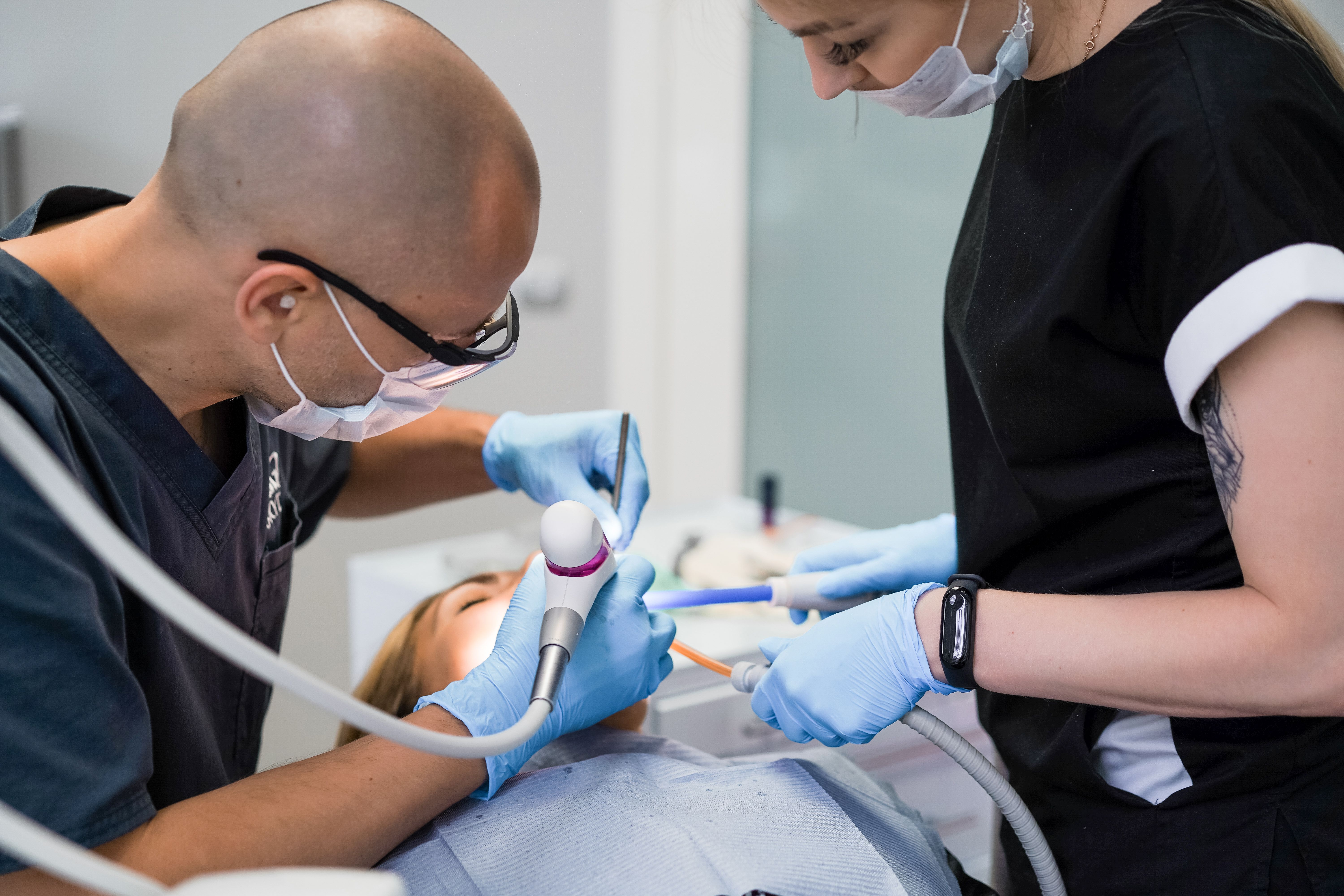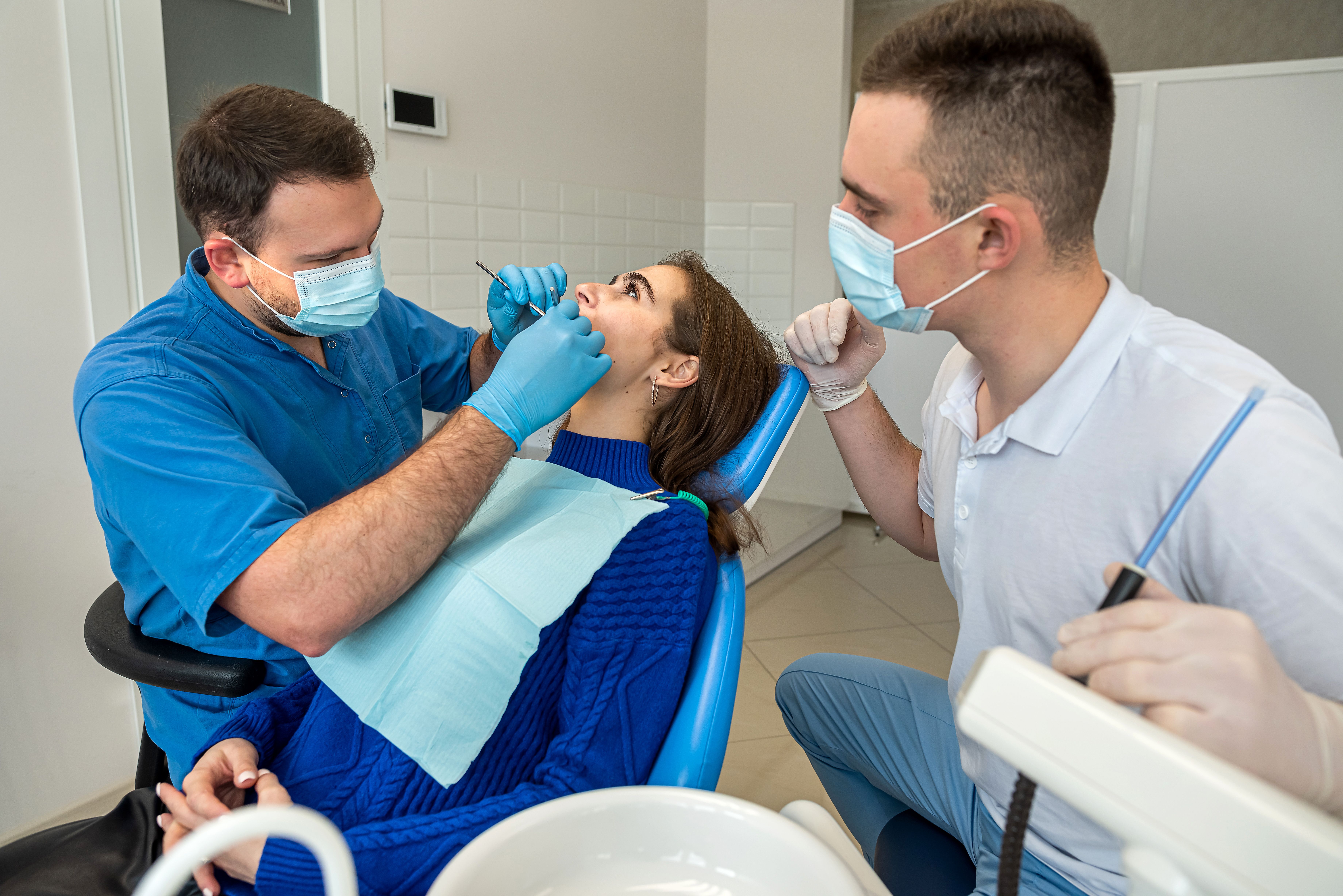Dental Exams and Cleaning Procedures
2023-05-23
Caring for your oral health is vital to maintaining overall health and wellness. Regular dental exams and cleaning procedures are essential to prevent tooth decay, gum disease, and other oral health problems. Dental exams are typically recommended every six months but may be more frequent for individuals with certain dental conditions.
During a dental exam, a dentist or dental hygienist will check for cavities, examine your gums for signs of gum disease, and perform a comprehensive oral cancer screening. Dental X-rays help detect underlying issues that may not be visible during a physical examination.
In addition to dental exams, regular cleaning procedures help remove plaque and tartar that otherwise can lead to tooth decay and gum disease.
By investing in regular dental exams and cleanings, you can prevent common dental issues and maintain a healthy and beautiful smile for years. So don't neglect your oral health – schedule your next dental appointment today.
"Regular dental examinations and cleanings can help prevent tooth decay. According to the American Dental Association, about 1 in 4 adults have untreated cavities. Dental sealants help decrease the risk of tooth decay by up to 80% in the first two years after application, whereas regular dental exams help treat problems even before they emerge".
What are Dental Exams and Their Common Types?
A dental exam is a comprehensive evaluation of a patient's oral health, typically performed by a dentist or dental hygienist. The exam involves a series of assessments to detect any potential issues or areas of concern related to the teeth, gums, mouth, and surrounding structures.
The dental exam usually begins with a review of the patient's medical and dental history and any current symptoms or concerns. The dental professional will then visually examine the teeth and gums, using special instruments to check for cavities, decay, or gum disease.
The dental exam may also include using diagnostic tools, such as dental X-rays, to detect any issues that are not visible during the visual examination. The X-rays can help the dental professional uncover problems with the roots or jawbone and any potential tumors or cysts.
In addition to the visual examination and diagnostic tests, a dental exam may include an oral cancer screening. The dental professional checks for any signs of cancer in the mouth or throat and may also check the bite and teeth alignment. Additionally, it helps identify jaw problems and the condition of any existing dental restorations, such as fillings or crowns. Here we'll discuss some common types of dental examinations for your enlightenment.
- Comprehensive Dental Exam: Also known as a new patient exam, this type of exam involves a comprehensive assessment of the patient's oral health. It includes a medical history review, dental X-rays, a visual examination of the teeth and gums, and an oral cancer screening.

- Periodic Dental Exam: The dentist usually conducts this exam every six months to improve the patient's oral health. It involves visually examining the teeth and gums to check for potential signs of gum disease, tooth decay, or other oral problems.
- Emergency Dental Exam: The dental health professional uses this type of exam when a patient is experiencing severe pain or discomfort in his teeth or gums. It involves a visual examination of the affected area and any necessary X-rays to determine the cause of the issue and provide appropriate treatment.
- Regular dental exam: It is a routine dental check-up performed after every six months or as per the dentist's advice. It involves a comprehensive examination of the teeth, gums, mouth, and surrounding structures to detect potential issues or areas of concern.
- Limited Oral Exam: This type of exam is of significant value when a patient has a specific issue or concern, such as a toothache or a chipped tooth. It involves a focused examination of the affected area to diagnose the problem and provide appropriate treatment.
What are Dental Cleaning Procedures?
Dental cleaning procedures are preventive measures a dental hygienist or dentist performs to maintain good oral health and prevent dental problems. The procedures involve the removal of plaque, tartar, and stains from the teeth, along with a thorough examination of the mouth to identify any potential issues. Dental cleaning procedures have numerous benefits for oral health, such as:
- Preventing tooth decay: Dental cleaning procedures help remove plaque and tartar that otherwise causes tooth decay when accumulated on teeth. Dental cleaning procedures can help prevent cavities and keep the teeth healthy by removing plaque.
- Prevent gum disease: Regular dental cleaning procedures reduce the risk of gum disease and help prevent it. Regular teeth cleaning procedures help remove plaque and tartar before they can cause significant teeth damage.
- Fresher breath: Dental cleaning procedures remove the bacteria that cause bad breath, leaving the mouth feeling fresher and cleaner.
- Early detection of dental problems: During a dental cleaning procedure, the dentist or hygienist can detect early signs of dental issues, including cavities, gum disease, or oral cancer. Early detection and treatment can prevent these problems from becoming more severe and save you money in the long run.
- Overall health benefits: Numerous health issues, such as heart disease, stroke, and diabetes, have been associated with poor oral health. By maintaining good oral hygiene and regular dental cleaning procedures, you can help prevent these and other health problems.

Depending on the patient's needs, here are some of the most common types of teeth cleaning procedures to improve oral health functioning:
- Prophylaxis Cleaning: Prophylaxis is the primary dental cleaning procedure and a part of preventive dentistry. It is best for patients with healthy teeth and gums. It involves eliminating plaque and tartar from the surfaces of the teeth and beneath the gum line, then polishing the teeth to eliminate surface stains and provide them with a smooth, shiny surface.
- Scaling and Root Planing: Dentists advise patients with gum disease or periodontitis to undergo this cleaning procedure. Scaling entails removing plaque and tartar from the surfaces of the teeth and below the gum line. In contrast, root planing involves smoothing out the root surfaces to prevent the accumulation of bacteria and debris. It also helps promote the healing of the gums.
- Complete Mouth Debridement: This cleaning procedure is recommended for patients with a significant buildup of plaque and tartar and may require multiple visits to complete. It involves removing as much plaque and tartar as possible from the teeth and gums, followed by a more thorough examination to identify underlying dental problems.
- Periodontal maintenance cleaning: Dentists recommend this procedure for patients undergoing scaling and root planing or other periodontal treatments. It involves regular cleanings to prevent further buildup of plaque and tartar and maintain the health of the teeth and gums.
What to Expect During Dental Examinations and Teeth Cleaning Procedures?
During a dental examination and teeth cleaning procedure, you can expect the following:
- Comprehensive oral examination: During a complete oral examination, the dentist or dental hygienist will check your mouth, teeth, and gums for any indications of decay, gum disease, or other dental problems. If necessary, they may take X-rays to better view your dental health.
- Scaling and cleaning: The dental hygienist will use specialized instruments to eliminate plaque and tartar buildup from and below the gum line during scaling and cleaning. Additionally, teeth polishing helps eliminate any surface stains from the teeth.
- Oral cancer screening: The dentist or dental hygienist will examine your mouth, lips, tongue, and throat for signs of oral cancer, including lumps, bumps, or other abnormal growths.
- Fluoride treatment: If recommended, the dental hygienist may apply fluoride to your teeth to help strengthen the enamel and prevent tooth decay.
- Recommendations for oral hygiene: The dentist or dental hygienist will guide you in maintaining good oral hygiene, which may include brushing and flossing techniques, use of mouthwash, and dietary recommendations.
- Follow-up appointments: Depending on your dental health, the dentist may recommend follow-up appointments for further treatment or monitoring.
Having your teeth checked by a dentist regularly and cleaned is essential to maintain good oral health and prevent dental problems. Removing plaque and tartar can also prevent tooth decay and gum disease. These procedures can detect any issues early on and prevent them from becoming severe.
Thoughts
Dental examinations and teeth cleaning procedures are beneficial because they help to identify potential issues early on before they become more severe. Furthermore, regular dental cleanings can eliminate plaque and tartar buildup, which can aid in preventing tooth decay and gum disease.
Not only do these procedures improve oral health, but they also have a significant impact on overall health. Research has linked poor oral health to serious health issues like diabetes, cardiovascular disease, and respiratory infections. Thus, maintaining good oral hygiene through regular dental examinations and teeth cleaning procedures can help to prevent these health issues.
By making dental examinations and teeth cleaning procedures a regular part of your dental health care routine, you can maintain good oral health and prevent dental problems for years.
Contact your dentist in Walnut Creek, Dr. Darvishzadeh at Walnut Creek Dental, to learn more about Dental Exams and Cleaning Procedures.
Resource:
Why Do You Need Digital Dental X-rays?
*This media/content or any other on this website does not prescribe, recommend, or prevent any treatment or procedure. Therefore, we highly recommend that you get the advice of a qualified dentist or other medical practitioners regarding your specific dental condition*
Subscribe To Our Newsletter
Get Updates And Learn From The Best